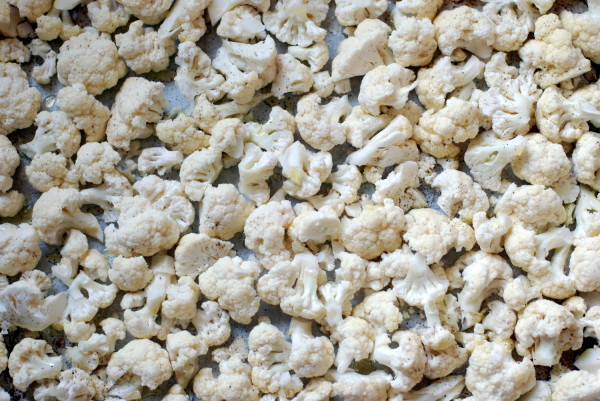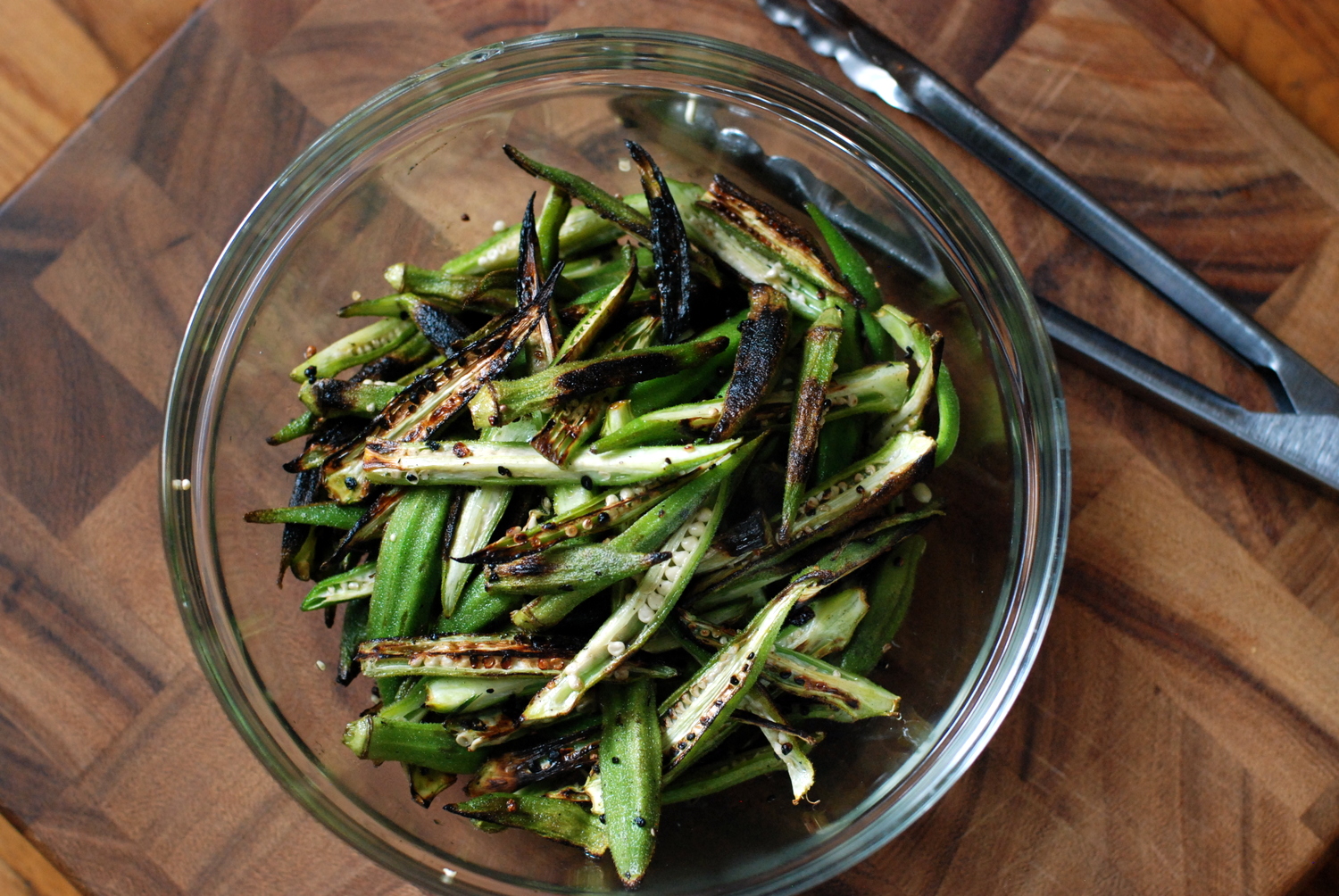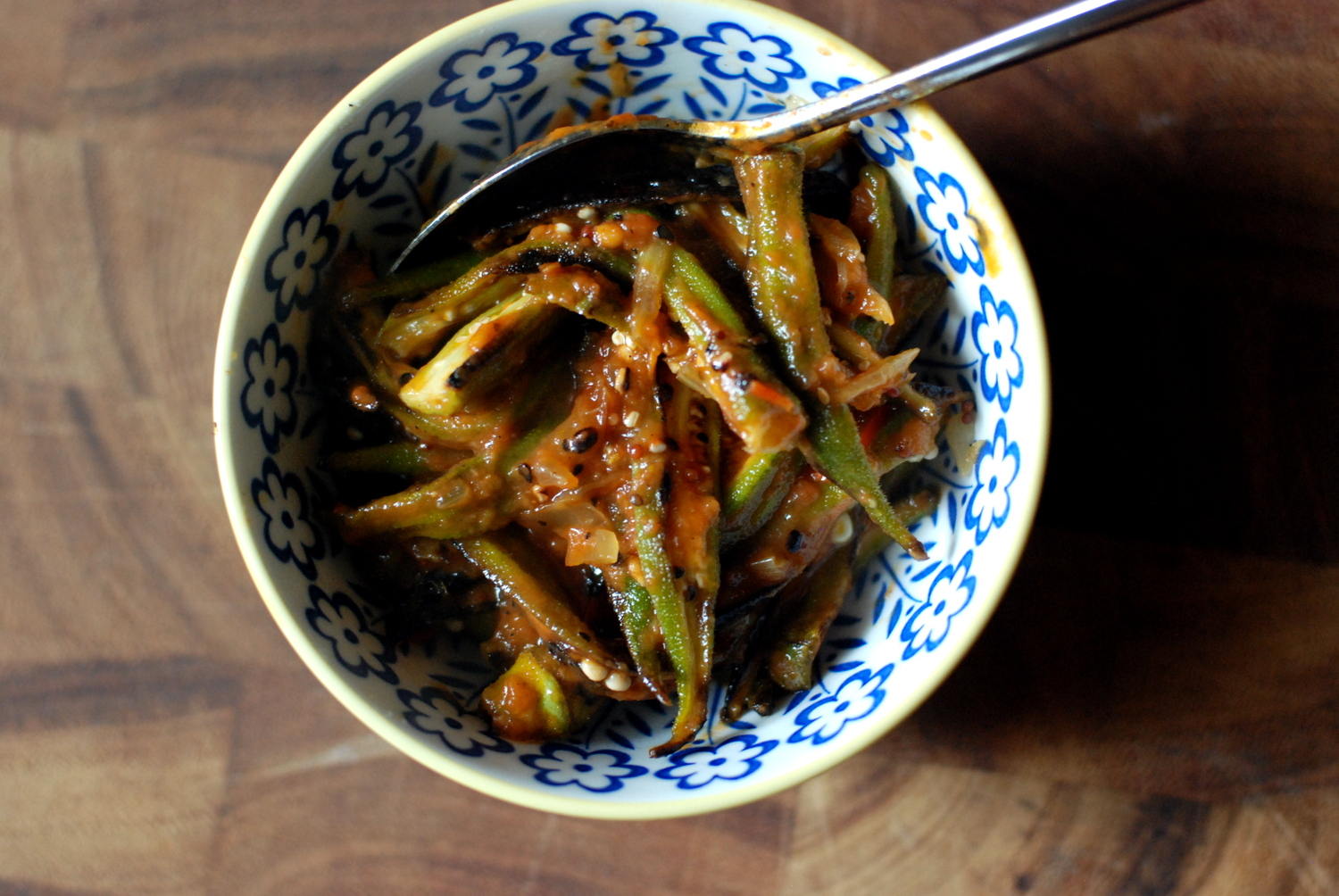It makes no sense to start a post about cauliflower with a public service announcement about plums. That said, I happened to pick up a bag of methly plums at the market a couple weeks ago; they were juicy and wet, sold as seconds because they were...on the verge. They were begging to be mushed with some sugar and made into jam. So I did it. And friends, that jam is so good, so utterly addictive, that I'm rather heartbroken methly plums are now out of season here. With that, the PSA: if methlys are still growing where you are, get a bag. Combine them with some sugar, some lemon juice, and some ground ginger, or better yet, some ground galangal. Cook until bubbly but still runny. Jar. Smear some on toast with a bit of fresh cheese. Summer has never, ever, tasted this good.
The dish I'm actually here to share with you won't win any awards for the summeriest dish around, but it's landed on our table four times in the past month, including twice for company. It's the thing Adi eats the most of right now - she can't seem to get enough cauliflower in the belly. And three of our guests have asked for the recipe, confirming that this is good enough to last beyond our family cauli kick.
The florets are blasted in a super-hot oven for a surprisingly long time. You'd think they come out total mush, but instead, they come out browned in spots, very crispy, and fully cooked but still with bite.
But the real magic is the sauce: a beautiful, pink-hued yogurt blended with sauteed, caramel-edged red onions. The onions get soft enough to disappear completely into the yogurt, lending a sweet-savory depth that goes ridiculously well with singed cauliflower. Vinegar-soaked raisins and some mint leaves round out the salad. I can't get enough of it; none of us can, really.
I'm always looking for dishes that work well together as part of a menu, and last night's meal pretty much hit the jackpot for me as far as menus that fit in my schedule without requiring too many concessions or short cuts, so I thought I'd share it. We had rosé night with our wine club, and I made dishes whose flavors I thought would complement rosés. I got some planning help from my buddies Jennifer Hess and Mike Dietsch, via twitter, so they deserve some credit for pulling this dinner party together. The menu was as follows:
- Chilled curried summer squash soup, adapted from Saveur
- Molasses-roasted salmon, roasted in the morning and chilled served cold
- Tomato salad with spiced brown butter, inspired by this recipe (soon on the blog!)
- Pissaladiere, made in advance and reheated in a warm oven before serving
- Cauliflower with red onion yogurt sauce (recipe below), roasted in advance; served at room temperature
- Peach crisp (adapted from this recipe)
- Vanilla ice cream
This is a menu that I can see reusing in the future. Except for the salmon, which I assembled before lunch, I made pretty much everything during Adi's two-hour nap. The only a-la-minute prep required was to assemble the cauliflower salad, reheat the (baked, pre-sliced) pissaladiere, and dress the tomatoes. I felt less in the weeds as a host than I have in eons. That's what summer's all about.
Roasted Cauliflower with Red Onion-Yogurt Sauce
As you can see in the photos above, I tossed some zucchini coins in with the cauliflower. Highly recommend.
Serves 4 as a side
1 large head of cauliflower
4 tablespoons olive oil, divided salt and pepper
1 small or 1/2 a large red onion, cut into a large dice
Juice of 1 lemon Turkish or other fragrant dried red chile, to taste
1 cup Greek yogurt
1/4 cup red raisins or currants
2 tablespoons red wine vinegar
a sprig of mintPreheat the oven to 450 degrees.
Cut the cauliflower into roughly 1-inch florets. Spread in a single layer on a rimmed 13x17 baking sheet; drizzle with 2 tablespoons of the olive oil, and sprinkle with salt and pepper. Roast, turning florets halfway through baking, until browned on both sides and cooked through but not mushy. For me, this takes about 45 minutes. Remove from the oven and set aside.
Meanwhile, add remaining 2 tablespoons of olive oil to a small saucepan and set over medium heat. When oil shimmers, add diced onion and a couple pinches of salt and pepper. Stir to coat in the oil, then cover saucepan and cook for about 10-15 minutes, stirring occasionally, until onions are mostly translucent but caramelized around the edges and very fragrant. Unlike caramelized onions, which are made over a low, slow burner, these are cooked over higher heat, resulting in a translucent onion with slightly browned/frizzled edges. If your heat is lower or your onions are taking longer to soften and cook, don't rush them; they're the basis of the yogurt sauce, so you really want to coax as much flavor out of them as possible.
Set onions aside to cool for 5-10 minutes, then add to a blender with any residual oil, and the yogurt, lemon juice, a pinch each of salt and pepper, and a pinch of the red chile. Blend, first on low, then on high; add water by the tablespoon if your blender is struggling to catch. When mixture is smooth, stop the blender and taste; add more salt, pepper, chile, or lemon as needed.
To serve, plate cauliflower on a shallow platter. Sprinkle currants/raisins evenly over the dish. Drizzle yogurt sauce over cauliflower, and finish with a few strewn mint leaves. Serve with extra yogurt sauce on the side.
















